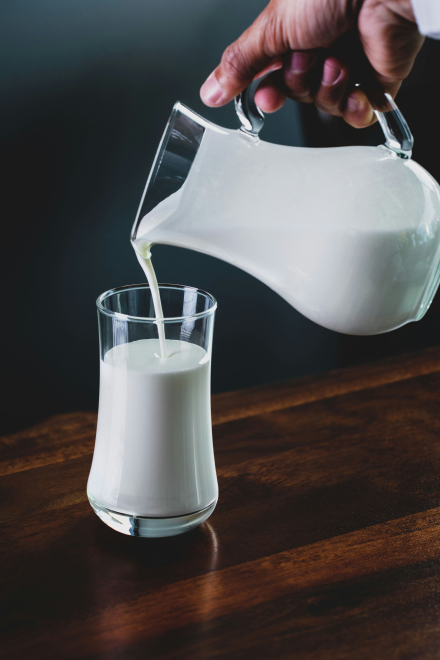- Change theme
Ensuring Quality and Safety: Sanitary Processes in the Dairy Production Industry

The dairy production industry plays a critical role in supplying essential products such as milk, cheese, butter, and yogurt to the global market.
00:55 15 November 2024
Introduction
The dairy production industry plays a critical role in supplying essential products such as milk, cheese, butter, and yogurt to the global market. Given the perishable nature of dairy products, maintaining sanitary processes throughout every step of the production chain is essential. Sanitary practices ensure not only the safety of the products but also help to extend their shelf life, enhance product quality, and prevent the spread of harmful pathogens. This article explores the key sanitary processes involved in dairy production, from raw milk collection to processing and packaging, highlighting their importance in ensuring food safety and consumer health.
- Raw Milk Collection and Handling
The foundation of dairy production begins with raw milk collection. Milk can be contaminated with bacteria, dirt, or other harmful microorganisms from the farm environment, animal udder, or the equipment used for milking. To prevent this, strict hygiene practices must be followed at every step of the milking process:
- Cleanliness of Equipment and Utensils: All milking machines, containers, and utensils must be thoroughly cleaned and sanitized before use to avoid contamination.
- Milk Storage: Raw milk should be stored in refrigerated tanks that maintain a temperature of 4°C (39°F) to slow bacterial growth. Ideally, milk should be transported to the processing facility as soon as possible.
- Animal Health and Hygiene: Healthy cows are less likely to carry harmful pathogens. Farmers must ensure the cleanliness of the cow’s udder and ensure proper animal care to prevent infections like mastitis, which can affect milk quality.
- Pasteurization: The Key to Killing Harmful Bacteria
Once the raw milk arrives at the dairy processing facility, one of the most crucial sanitary steps is pasteurization. Pasteurization is a heat treatment process designed to kill harmful bacteria, viruses, and pathogens without compromising the nutritional quality of the milk. The process typically involves:
- Heating the milk to a specific temperature (usually 72°C or 161°F) for at least 15 seconds.
- Rapid cooling to bring the milk back down to a safe storage temperature, usually around 4°C (39°F).
This step is crucial in preventing the spread of foodborne illnesses like Salmonella, E. coli, and Listeria, which can cause serious health issues for consumers.
- Filtration and Separation
Before or after pasteurization, milk may undergo filtration and separation processes to remove any remaining particles, fat, or impurities. These processes also help to standardize milk by separating cream from milk, which can then be recombined in desired proportions to produce different dairy products like skim milk, whole milk, or cream.
- Microfiltration: Fine filters are used to remove bacteria and larger particles from the milk.
- Centrifugal Separation: This process uses centrifugal force to separate cream from milk, which can then be processed into various dairy products.
Both methods contribute to improving the overall sanitary conditions of the milk and preventing the contamination of finished products.
- Fermentation and Enzyme Treatment
In the production of dairy products like cheese, yogurt, and butter, fermentation and enzymatic treatments are common. Maintaining a sanitary environment during these processes is critical:
- Fermentation Control: Beneficial bacteria (like Lactobacillus and Streptococcus) are added to milk to start fermentation. Strict hygienic conditions must be maintained to prevent the introduction of harmful microbes during this process.
- Use of Rennet and Enzymes: In cheese production, enzymes such as rennet are used to coagulate milk. These enzymes should be handled and stored properly to avoid contamination.
Fermentation tanks, starter cultures, and enzymes must be carefully sanitized to ensure that only the intended microorganisms are allowed to grow.
- Packaging and Storage
Once dairy products are processed and ready for packaging, maintaining sanitary conditions continues to be a priority. Packaging is the last step before the product reaches the consumer, and improper handling at this stage can lead to contamination. Best practices include:
- Clean Packaging Equipment: All packaging machines should be regularly cleaned and sanitized to avoid introducing bacteria into the product.
- Hygienic Packaging Materials: Packaging materials must be sourced from certified, safe suppliers and stored in a clean environment.
- Cold Storage: Dairy products should be stored at the appropriate temperature to slow down microbial growth. Refrigerated storage is essential for maintaining both product quality and safety.
- Employee Training and Personal Hygiene
The sanitary process in dairy production relies heavily on the actions of the people involved in the process. Dairy workers must adhere to strict hygiene standards to prevent contamination:
- Personal Hygiene: Workers must wash hands frequently, wear clean uniforms, hairnets, and gloves, and follow stringent protocols to prevent cross-contamination.
- Training Programs: Regular training on food safety and sanitation practices helps employees stay informed about the latest guidelines and best practices for handling dairy products safely.
Conclusion
Sanitary processes in the dairy production industry are paramount to ensuring the safety and quality of cip in dairy industry. From raw milk collection to pasteurization, fermentation, and packaging, maintaining hygienic conditions at each stage helps prevent contamination and preserves product integrity. Adhering to industry standards and guidelines, combined with continuous employee education and technological advancements, helps safeguard consumer health while delivering fresh, high-quality dairy products to the market. Ultimately, sanitation in dairy production is not just about compliance—it's about building trust with consumers and ensuring that every product is safe, nutritious, and of the highest possible quality.
